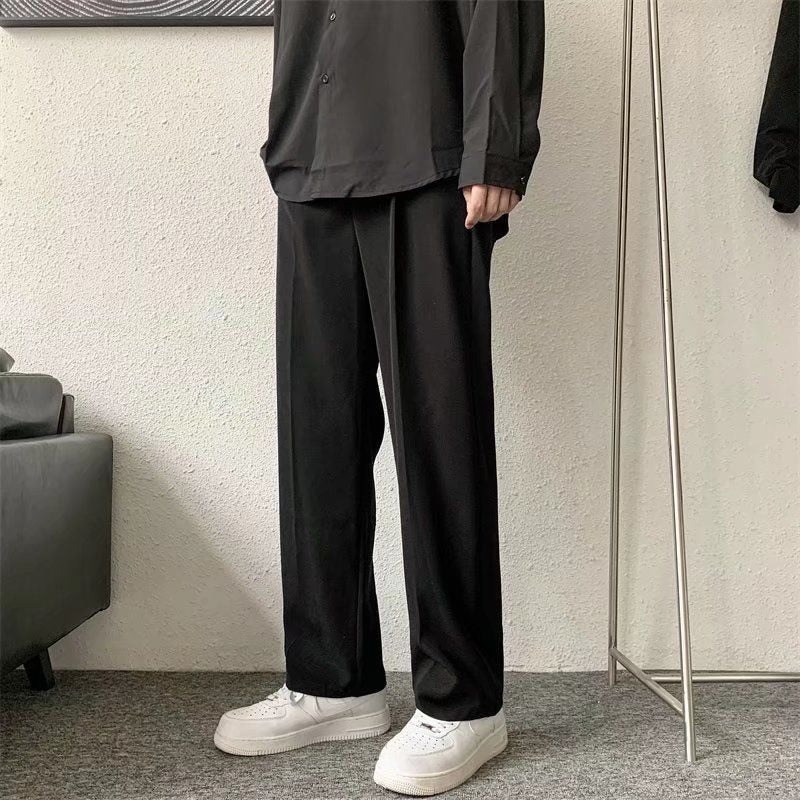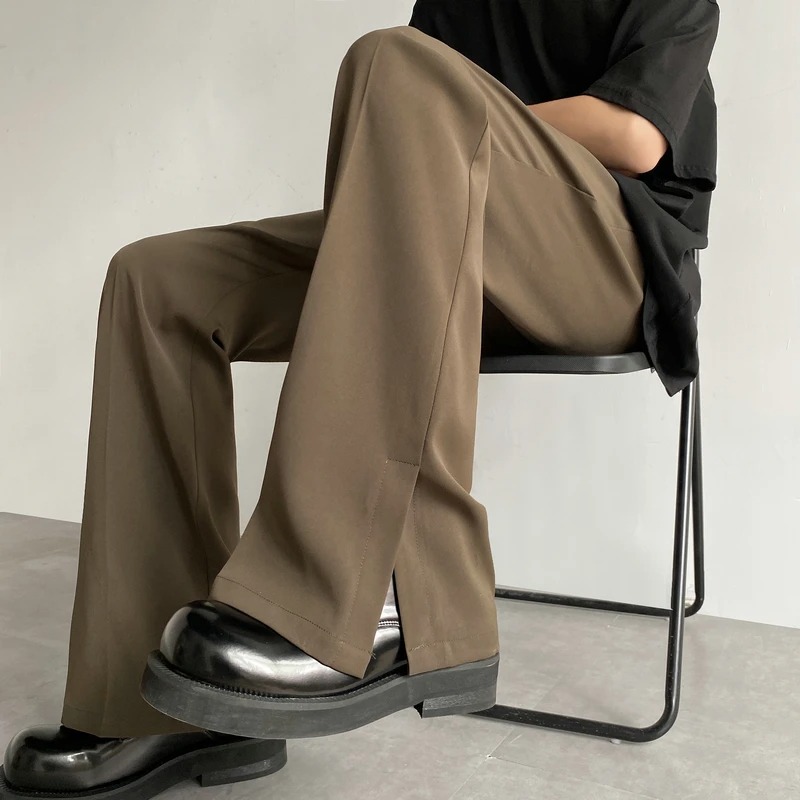Men yoga pants has become increasingly popular among men for its physical and mental health benefits. As the practice continues to evolve, so does the attire. Men’s yoga pants, once a niche market, now offer a wide range of styles, fabrics, and features to suit every yogi’s needs. In this comprehensive guide, we’ll explore everything you need to know about choosing the perfect pair of men’s yoga pants, from fabric selection to fit and functionality.

1. Understanding Different Types of Men’s Yoga Pants
Before diving into the specifics of choosing men’s yoga pants, it’s essential to understand the different types available in the market:
Traditional Yoga Pants:
These are typically made from lightweight, stretchy fabrics like spandex or nylon. They offer a snug fit and excellent flexibility, making them ideal for dynamic yoga practices like Vinyasa or Ashtanga.
Harem Pants:
Harem pants feature a loose, baggy fit with a dropped crotch and tapered legs. They provide ample room for movement and are popular for more relaxed yoga styles like Yin or Restorative.
Compression Pants:
Compression pants are designed to provide targeted muscle support and improve circulation during intense yoga sessions. They are usually made from moisture-wicking fabrics like polyester or nylon with added elastane for stretch.
Joggers:
Yoga-inspired joggers combine the comfort of traditional fleece pants with the flexibility of yoga pants. They often feature a tapered fit, elasticized waistband, and moisture-wicking properties, making them suitable for both yoga and casual wear.
Shorts:
Yoga shorts offer freedom of movement and breathability, making them ideal for hot yoga or Bikram sessions. They come in various lengths, from above-the-knee to mid-thigh, and are typically made from lightweight, quick-drying fabrics.

2. Factors to Consider When Choosing Men’s Yoga Pants
Fabric:
The fabric of your yoga pants plays a crucial role in comfort and performance. Look for moisture-wicking materials like polyester or nylon, which help keep you dry by wicking sweat away from the skin. Additionally, choose fabrics with stretch properties such as elastane or spandex for enhanced flexibility during yoga poses.
Fit:
The fit of your yoga pants should be snug yet comfortable, allowing for a full range of motion without feeling restrictive. Avoid athletic pants that are too tight or too loose, as they can impede movement or cause discomfort during yoga practice. Opt for a tapered or slim fit for a modern look, or choose a relaxed fit for maximum comfort.
Waistband:
The waistband of your yoga pants should provide adequate support and stay in place during movement. Look for pants with elasticized waistbands or drawstring closures for a secure fit. Some styles also feature high-rise waistbands for added coverage and support, while others have low-rise designs for a more casual look.
Breathability:
Breathable fabrics are essential for maintaining comfort during intense yoga sessions. Choose pants with mesh panels or perforated details in high-sweat areas like the waistband, crotch, and back of the knees. These ventilation features allow air to circulate freely, helping to regulate body temperature and prevent overheating.
Durability:
Invest in high-quality yoga pants that can withstand the rigors of regular practice. Look for reinforced seams, double stitching, and durable fabric blends that resist pilling and fading over time. Check customer reviews and product descriptions for information on the pants’ durability and longevity.
f. Versatility:
Consider how you plan to use your yoga pants outside of the studio. If you’re looking for pants that can transition seamlessly from yoga class to running errands, opt for versatile styles like joggers or harem pants. These multipurpose pants offer the comfort and performance you need for yoga practice, with the style and functionality to wear throughout the day.

Tips for Trying On Men’s Yoga Pants
Pay Attention to Length:
The length of your yoga pants can impact both comfort and aesthetics. Look for pants that hit at or slightly above the ankles for optimal mobility and coverage during yoga poses. Avoid pants that are too long, as they may bunch up at the ankles and restrict movement.
Test Range of Motion:
Before purchasing yoga pants, perform a few yoga poses or stretches to assess their range of motion. Pay attention to areas like the hips, knees, and groin, ensuring that the pants allow for unrestricted movement without feeling tight or constrictive.
Check for Transparency:
If you’re trying on yoga pants made from lightweight or stretchy fabrics, check for transparency by bending over or stretching in front of a mirror. Look for casual pants that maintain opacity even during deep bends or stretches, preventing any embarrassing wardrobe malfunctions during yoga practice.
Evaluate Comfort:
Comfort is key when choosing men’s yoga pants, so take the time to evaluate how the pants feel against your skin. Look for soft, non-abrasive fabrics that don’t chafe or irritate sensitive areas. Pay attention to features like seam placement and waistband construction, ensuring that they enhance comfort rather than cause discomfort.
Consider Layering:
If you plan to wear your yoga pants for outdoor or cold-weather activities, consider layering them with moisture-wicking base layers or thermal leggings for added warmth and protection. Look for pants with a slim fit that can easily be layered underneath other garments without feeling bulky or restrictive.
Maintenance and Care Tips for Men’s Yoga Pants
Follow Washing Instructions:
Always refer to the care label on your yoga pants for specific washing instructions. Most yoga pants can be machine washed in cold water on a gentle cycle and tumble dried on low heat. Avoid using bleach or fabric softeners, as they can break down the fabric and reduce its elasticity over time.

Air Dry When Possible:
To prolong the life of your yoga pants and maintain their shape and elasticity, air dry them whenever possible. Hang them on a clothesline or drying rack away from direct sunlight to prevent fading and shrinkage. Avoid using a dryer unless necessary, as the heat can damage the fabric and cause it to lose its stretch.
Store Properly:
When not in use, store your yoga pants in a cool, dry place away from direct sunlight and moisture. Avoid folding them tightly or hanging them on thin hangers, as this can cause creases or stretch out the fabric. Instead, gently fold or roll the pants and place them in a drawer or wardrobe for safekeeping.
Remove Stains Promptly:
If your yoga pants become stained during practice, treat the stains promptly to prevent them from setting in. Blot the stain with a damp cloth or pre-treat it with a gentle stain remover before washing. Avoid using harsh chemicals or bleach, as they can damage the fabric and cause discoloration.
Rotate Between Pairs:
To extend the life of your yoga pants and prevent excessive wear and tear, rotate between multiple pairs during yoga practice. This allows each pair to rest and recover between workouts, reducing the risk of stretching out or wearing down the fabric prematurely.
Conclusion
Choosing the perfect pair of men’s yoga pants requires careful consideration of factors like fabric, fit, functionality, and maintenance.











